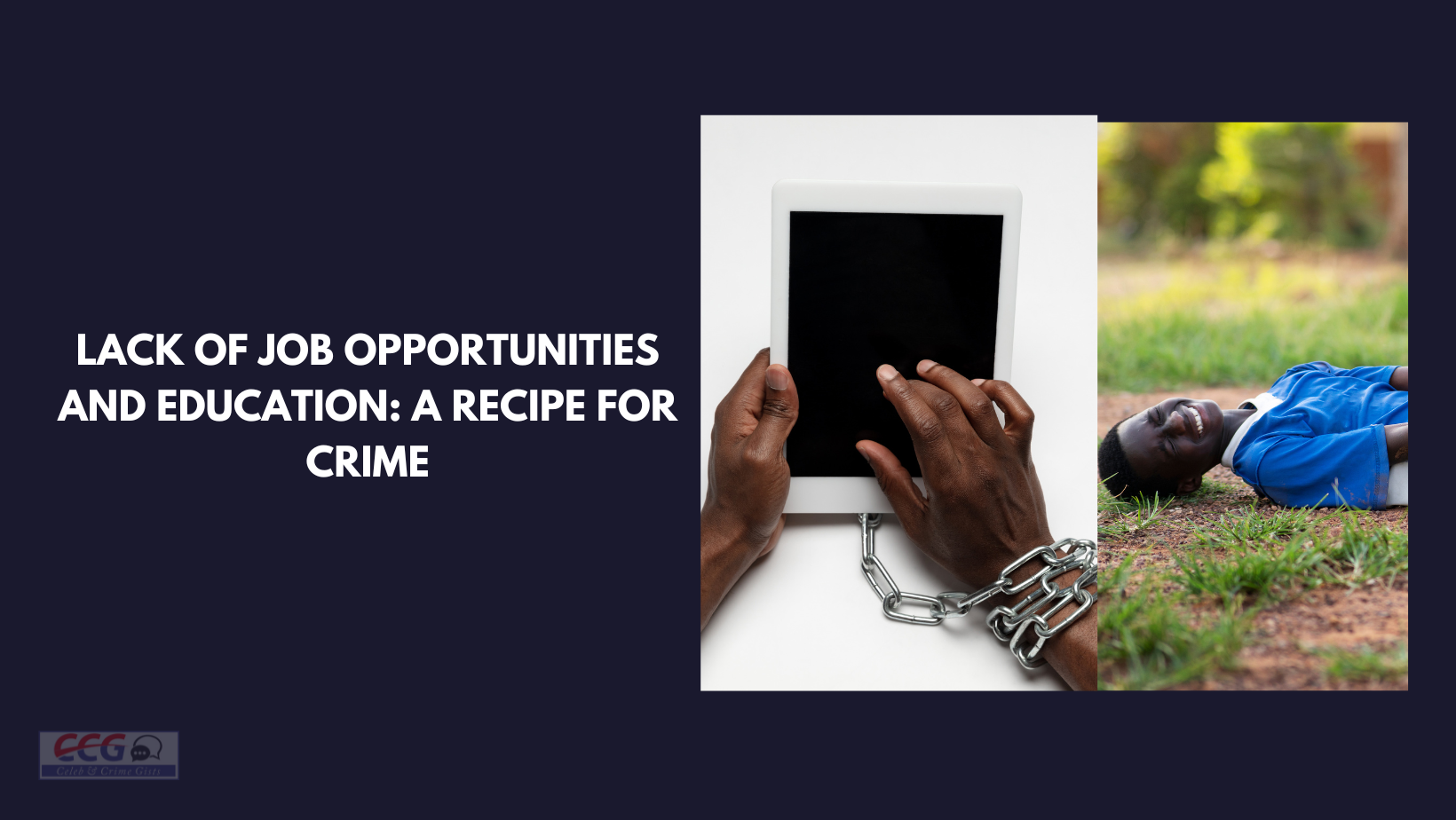Lack of Job Opportunities and Education: A Recipe for Crime’ In today’s society, crime is an increasingly prevalent issue. While it is true that there are a variety of factors that can contribute to this problem, one of the primary causes is the lack of job opportunities and education. Without access to these essential resources, many individuals are left feeling hopeless and desperate, which can lead them down the path of criminal activity. In this article, we will explore the relationship between job opportunities, education, and crime, and discuss some potential solutions to this pressing issue.
I. Lack of Job Opportunities and Education: A Recipe for Crime
The lack of job opportunities and education is a significant problem that affects many individuals in our society. This issue is particularly prevalent in low-income communities, where access to quality education and job opportunities can be limited. The significance of this problem is that it can lead to an increase in crime rates, as individuals who lack access to these resources may turn to illegal activities as a means of survival.

RELATED POST: Poverty and Lack of Education: A Cycle of Crime
II. The Relationship Between Job Opportunities and Crime
A. The impact of unemployment on crime rates
B. The link between poverty and crime
C. The role of education in job opportunities
Research has consistently shown that there is a direct correlation between job opportunities and crime rates. When individuals are unable to find employment, they may turn to criminal activities as a means of making ends meet. Poverty is also a significant contributor to crime, as individuals living in poverty are more likely to engage in criminal activity. Additionally, education plays a crucial role in creating job opportunities, as individuals with higher levels of education are more likely to find employment.
III. The Relationship Between Education and Crime
A. The impact of low education levels on crime rates
B. The importance of education in reducing crime
C. The role of education in breaking the cycle of poverty
Low education levels have been consistently linked to higher crime rates. Individuals who lack access to quality education may struggle to find employment, which can lead them down the path of criminal activity. Additionally, education is crucial in reducing crime rates, as individuals who receive an education are less likely to engage in criminal behaviour. Education also plays a crucial role in breaking the cycle of poverty, as it provides individuals with the tools they need to secure better job opportunities and improve their standard of living.
IV. Potential Solutions to Address the Lack of Job Opportunities and Education
A. Investing in education and job training programs
B. Increasing job opportunities in low-income communities
C. Providing financial assistance to individuals in need

There are several potential solutions to address the lack of job opportunities and education. Investing in education and job training programs can provide individuals with the skills they need to secure better job opportunities. Increasing job opportunities in low-income communities can also help to reduce crime rates by providing individuals with more options for employment. Finally, providing financial assistance to individuals in need can help to alleviate the economic burden that often leads to criminal behaviour.
V. Conclusion
A. Recap of the problem
B. The importance of addressing the issue
C. Call to action
In conclusion, the lack of job opportunities and education is a significant problem that can contribute to increased crime rates in our society. It is essential to address this.

